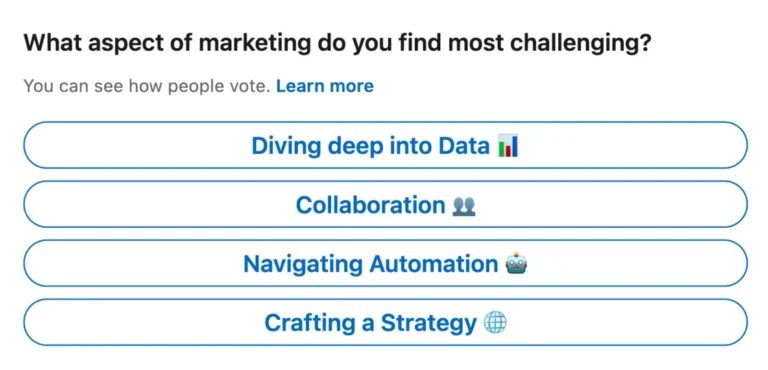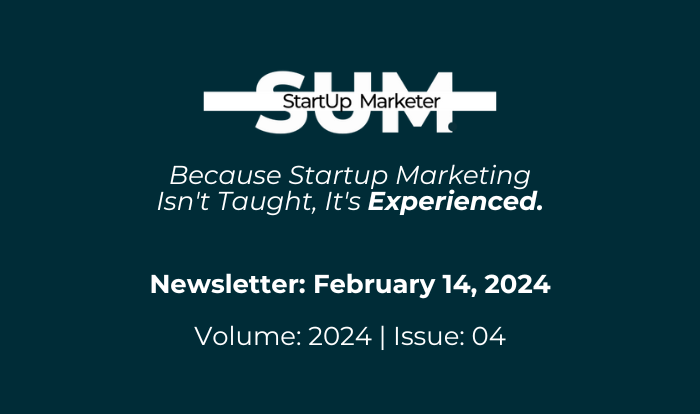This week, we’ll explore expert strategies to elevate your email game. From crafting killer subject lines to picking the right send times, you’ll get actionable, fact-based tips on how to break through the clutter and drive meaningful engagement. Plus, we’re breaking out of the traditional marketing funnel to take a ride on HubSpot’s flywheel model, which reshapes the landscape of customer engagement and turns customers into advocates. In this issue:
|

Say hi to Jillian here |
From Inbox to Revenue: Crafting Emails that Drive Demand
Email campaigns remain a potent tool for businesses seeking to drive demand generation. However, the challenges of standing out in overcrowded inboxes and capturing the attention of increasingly discerning consumers persist. This article is a succinct guide aimed at revitalizing lackluster email marketing strategies, providing actionable insights to propel marketing efforts forward. From segmentation and subject lines to automation and send times, learn how to make informed optimization decisions.
Strategies for Effective Email Marketing:
Segment Your Audience: The era of one-size-fits-all email blasts is over. Segmentation based on demographics, behaviors, and preferences results in a 14.31% higher open rate, according to MailChimp.
Personalize Your Content: Personalization is paramount, with studies indicating 6x higher transaction rates for personalized emails, as reported by Experian.
Craft Compelling Subject Lines: Concise, engaging, and relevant subject lines are critical. According to HubSpot, subject lines with 6-10 words have the highest open rates.
Focus on Quality Content: Quality over quantity is key. Providing valuable content that educates, entertains, or solves a problem helps build trust and credibility.
Optimize for Mobile: Given the prevalence of mobile device usage, ensuring mobile-friendly emails through responsive design is crucial.
Experiment with Send Times: Testing different send times helps identify peak engagement periods, optimizing the timing of email campaigns.
Utilize Automation: Automation tools streamline efforts, delivering timely and relevant messages. Automation aids in lead nurturing, re-engaging inactive subscribers, and personalizing the customer journey.
Survey Says:

Behind the scenes

Analyzing the HubSpot Flywheel Methodology
The HubSpot Flywheel Methodology represents a paradigm shift in how businesses approach growth, customer engagement, and marketing strategies. Unlike the traditional sales funnel, which views the customer journey as a linear process, the Flywheel model emphasizes a cyclical process that leverages the momentum of satisfied customers to drive referrals and repeat sales. This methodology focuses on three key stages: Attract, Engage, and Delight, creating a self-sustaining loop that fosters continuous growth.
Key Principles of the HubSpot Flywheel
Attract
The Attract phase is about drawing potential customers to your business through valuable content and interactions. This involves using your expertise to create content, conversations, and marketing strategies that start meaningful relationships with prospects.
Engage
In the Engage stage, businesses focus on building relationships with prospects by providing insights and solutions that align with their pain points and goals. This includes offering free versions of software to allow users to try before they buy, thus making it easy for prospects to engage with the product.
Delight
The Delight phase ensures that customers are not only satisfied but also so happy with the product or service that they become promoters of your brand. This involves providing exceptional service, support, and experiences that exceed customer expectations.
Tactics for Lead Generation
- Content Creation: Develop and share valuable content (blogs, webinars, social media posts) to attract and engage your audience.
- Free Tools and Trials: Offer free versions of your products or services to lower the barrier to entry and allow potential customers to experience the value of your offerings firsthand.
- Customer Service Excellence: Invest in providing outstanding customer service to delight customers, encouraging them to become brand advocates.
- Integration Ecosystem: Create an ecosystem of integrations that add value to your customers’ experience, making your product or service indispensable.
Use Cases
- Lyte: By adopting the Flywheel Model, Lyte improved its First Contact Resolutions from 63% to 73% and reduced reopened tickets from 36% to 4%, demonstrating the impact of a customer-centric approach on brand reputation and retention.
- M&C Saatchi Group: This creative solutions company saw a 385% increase in new leads and a 200% increase in conversion to MQLs after implementing the Flywheel Model, highlighting its effectiveness in attracting and converting leads.
Comparison with Other Strategies
The traditional sales funnel model focuses on acquiring new customers through a linear process, often neglecting the potential of existing customers to drive growth. In contrast, the Flywheel model recognizes the importance of leveraging happy customers to generate referrals and repeat sales, creating a self-sustaining cycle of growth. This approach not only fosters long-term relationships with customers but also creates a more efficient and effective growth strategy by reducing friction and increasing momentum at each stage of the customer journey.
The HubSpot Flywheel Methodology offers a holistic and sustainable approach to business growth, focusing on creating a positive feedback loop through satisfied customers. By implementing tactics that align with the Attract, Engage, and Delight stages, businesses can generate more leads, foster customer loyalty, and ultimately drive long-term success.
Around the Web
The B2B Marketing Guide to Account-Based Experience (ABX): This piece dives into the growing trend of account-based experience (ABX) in B2B marketing, outlining its benefits, strategies, and best practices for creating personalized and impactful customer journeys.
Video – B2B Marketing in 2024: The State of the Industry: This video report by HubSpot presents findings from their annual State of Inbound survey, focusing specifically on B2B marketing trends for 2024. They discuss key priorities, marketing technology adoption, and emerging tactics.
B2B Marketing Trends: 5 Things to Focus on in 2024: This article highlights five crucial B2B marketing trends to watch in 2024, including the rise of short-form video, the importance of data-driven decision making, and the increasing need for authenticity and human connection in marketing efforts.
The Evolving Landscape of B2B Marketing Measurement: As marketing strategies constantly evolve, so too do measurement techniques. This MarketingProfs article explores the changing landscape of B2B marketing measurement and emphasizes the need for a comprehensive approach that goes beyond simply tracking clicks and conversions.
B2B Influencer Marketing: A Guide to Success in 2024: Influencer marketing continues to gain traction in B2B marketing. This Social Media Today article provides insights and strategies for leveraging influencers effectively in your B2B campaigns, including identifying the right type of influencers and measuring their impact.
In the meme time…

Connect With Us:
Welcome to the inaugural issue of the StartUp Marketer newsletter. We’ll create and curate the tips, insights and stories about Read more
New year, new viral trend. If you’re like us, you’ve been spending a good amount of time watching TikTokers share Read more
In this edition of The StartUp Marketer newsletter, we’re delving into the core of effective remarketing strategies. Then, we’ll explore Read more
In this edition of the StartUp Marketer Newsletter, you’ll explore the strategic prowess of T-shaped marketers. Uncover the advantages they Read more







